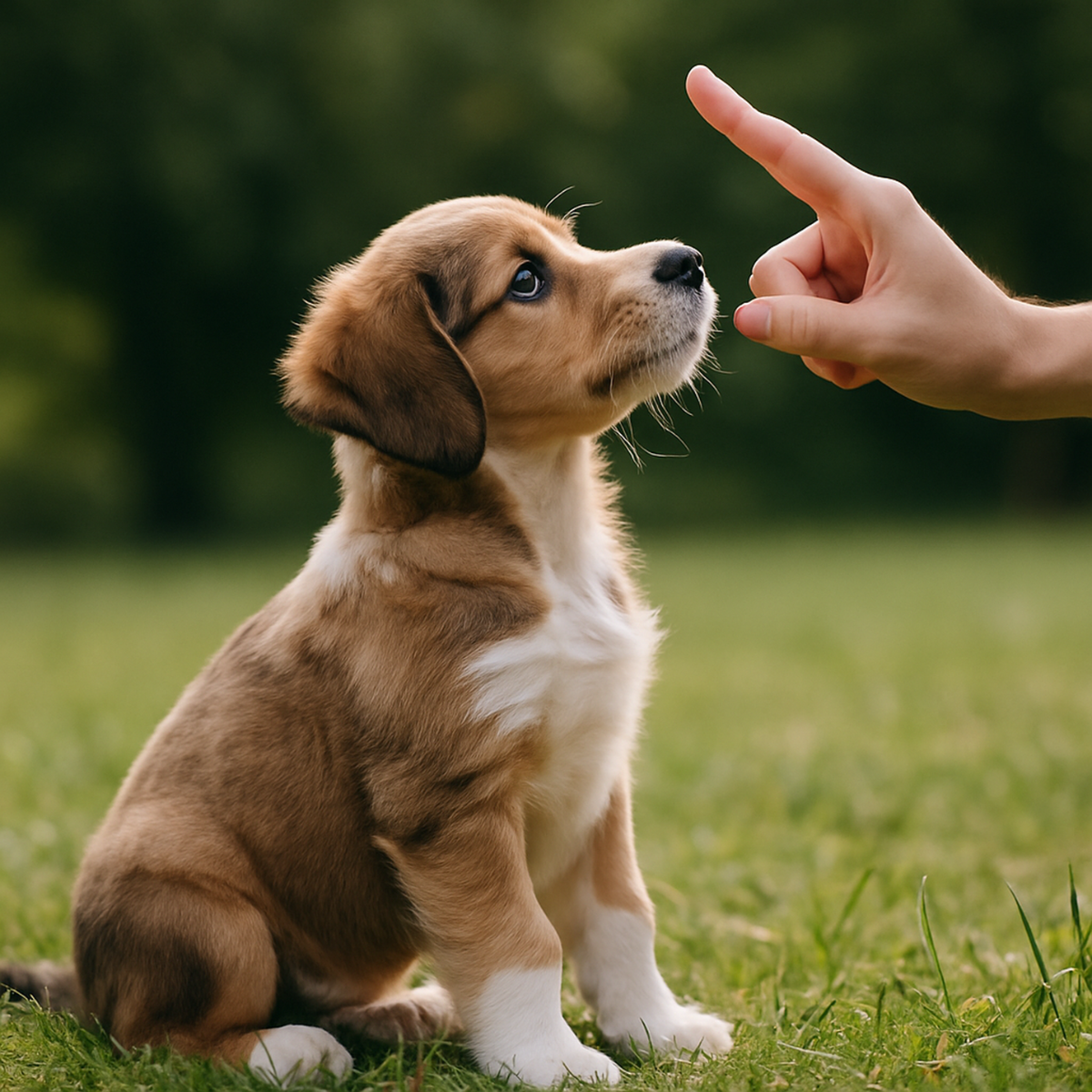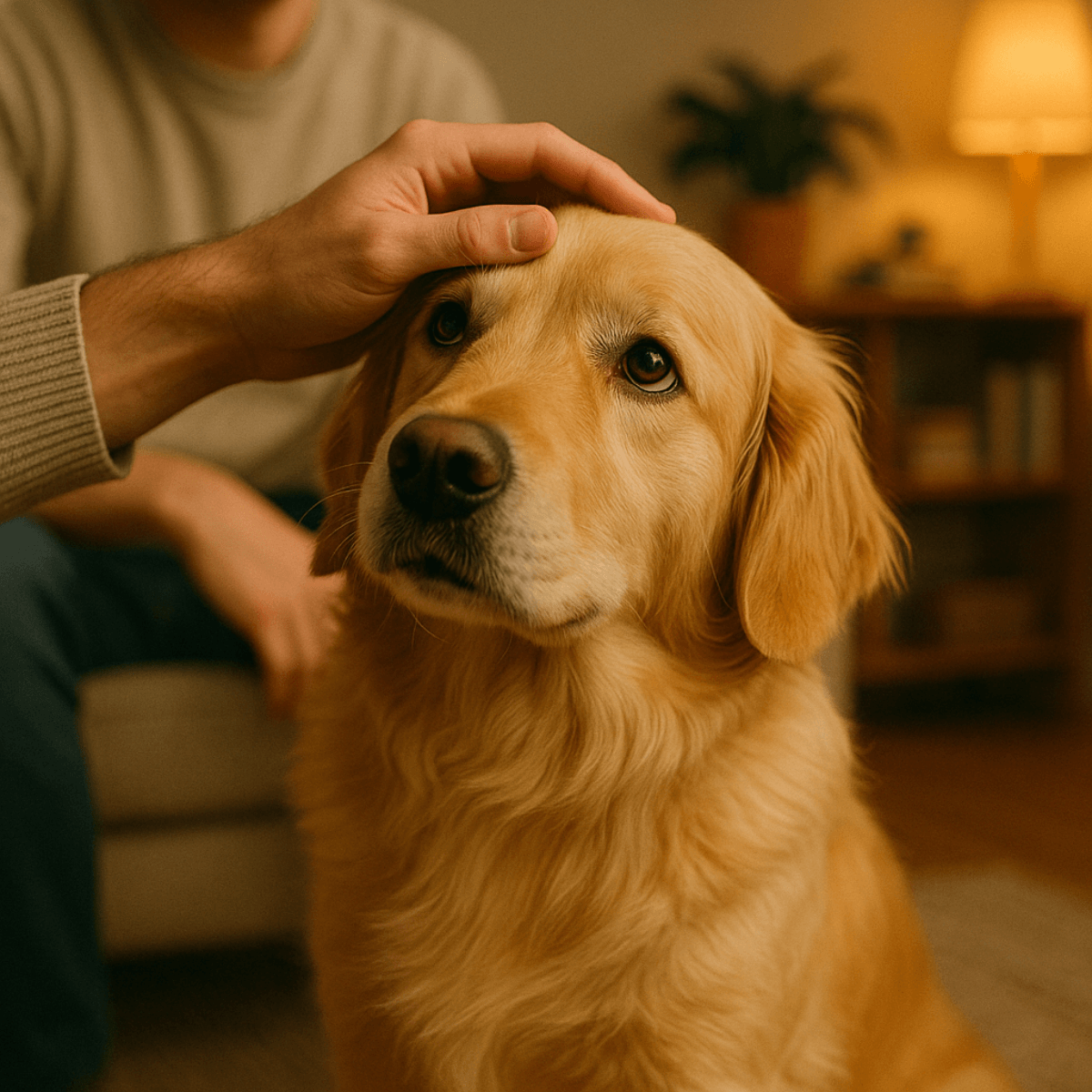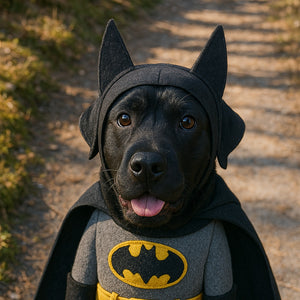
🐾 7 mistakes every beginner puppy owner makes – and how to avoid them!
Learn the secrets of effective dog training from the very first days – a practical guide that will change your approach!
Why is it worth training a puppy?
Every puppy is a blank slate – full of energy, curiosity, and natural instincts that can develop well or develop into behavioral challenges. Many people think it's best to wait until a dog is older to train. That's a myth! The sooner you start, the better.
Puppy training isn't just about teaching commands or cleanliness. Above all, it's about building communication, mutual trust, and understanding , which will benefit your dog throughout his life. Through simple exercises, you teach your pet how to function in the human world—with its noises, rules, and rhythms of life.
If you want your dog to be calm, composed, and safe, this article is for you. We show you not only the most effective training techniques , but also the 7 most common mistakes puppy owners make —and how to avoid them. Training a dog begins from the very first day it enters its new home. A puppy is not only a charming, fluffy companion, but also a creature that absorbs knowledge like a sponge. Properly conducted puppy training not only improves its safety and obedience, but also builds a lasting bond between owner and pet.
In this article you will find practical training tips , puppy training stages , as well as tips on how to avoid the most common mistakes and build trust from the first weeks of your dog's life.
🧠 Dog training basics – what do you need to know before you start?
Before you move on to teaching specific commands, it's important to understand the foundations of effective training . It's not just about technique—it's about communication style, attitude, and consistency in daily life. A good start is the key to success.
Ask yourself: can you read a dog's body language? Do you know how to tell when your pup is stressed, tired, or frustrated? Can you adjust the difficulty of the exercises to your puppy's abilities?
At this stage, the most important thing is to build a safe, stable, and predictable relationship . Your dog learns not only when you teach him, but also by observing your behavior. Therefore, training begins in everyday moments: when putting on a leash, feeding, playing, or resting.
1. Time and patience – the keys to success
Puppies learn through repetition, play, and rewards. Their attention spans are only a few minutes, so training sessions should be short (3–5 minutes) but regular—preferably several times a day.
🔁 The 5Ps: Repeat – Demonstrate – Help – Anticipate – Positively Reinforce.
2. Socialization Phase – the golden window between weeks 3 and 16
This is the most important period in a dog's life, when it learns what is "normal" in its world. It's here that its relationship with people, other animals, objects, and its surroundings is shaped. This is a stage that can't be fully recovered later, so it's crucial to act consciously. Neglecting socialization can lead to behavioral problems such as fearfulness, aggression, overexcitement, withdrawal, or difficulty adapting to everyday life. Socialization isn't just about meeting other dogs—it's a broad process of familiarizing them with the diversity of the world.
➡️ During this time, the dog should get to know and become familiar with:
- Various people (children, men, women, people with canes, glasses, strollers)
- Various dogs and animal species (cats, horses, birds)
- Various sounds (horn, vacuum cleaner, mixer, bicycle, fireworks)
- Various surfaces (sand, grass, panels, metal grates, stairs)
- Various situations (vet visits, bathing, car rides, putting on a harness)
🔑 Positive association is key – every new situation should be enjoyable for your dog. It's worth using treats, praise, and games to reinforce positive emotions. Never force your dog into contact – let them explore at their own pace.
✅ A daily socialization routine might look like this:
- 5–10 minutes of walking in a new place
- Meeting 1-2 new people
- Contact with a new surface or sound
- Playing with a new stimulus (e.g. a ball of a different texture, a bell, an obstacle course)
Remember: socialization is a lifelong process, but this first stage is crucial. Ensure your puppy develops into a dog that responds to the world with curiosity and calm.
- Various people (children, elderly, people in hats, glasses)
- Other dogs and animals
- Various sounds (vacuum cleaner, car, bicycle)
- New places and surfaces (sand, stairs, paving stones)
🐕 Puppy Development Stages – From Newborn to Teenager
Understanding your dog’s natural developmental phases allows you to better tailor your training methods:
- 0–2 weeks: Neonatal phase – puppy blind and deaf, completely dependent on its mother.
- 2–3 weeks: Transition phase – eyes and ears opening, first contacts with the world.
- 3–12/16 weeks: Socialization phase – the dog learns about the world, other dogs and people.
- 3–6 months: Youth – exploration, testing boundaries, just like children.
- 6–18 months: Maturation – increased independence, more challenging behaviors emerge.
Each phase presents different needs and challenges that should be taken into account when planning training.
🎯 The most important commands and skills to learn in the first months
1. "Come to me" - a life-saving command
Your dog should come running to you regardless of distractions. Always reward him for coming! Never punish a dog that returns—even if he ran away.
🟢 Exercise: Call your dog for a treat, showing enthusiasm and open arms. Repeat several times a day.
2. "Sit" and "lie down" – learning impulse control
These are the first steps in learning self-control. They help manage excitement, for example, around guests or eating.
🔄 Exercise: Hold a treat above your dog's head. When he sits, say "sit" and reward him. If he lies down, drag the treat down and forward.
3. Learning cleanliness
✅ Puppies cannot hold back their physiological needs for long – take them out:
- right after waking up
- after eating and drinking
- after the fun
- every 1–2 hours
Use praise and treats after doing their business outside. Ignore any mishaps at home – don't yell or rub your nose in!
🚶♂️ First walks and learning to walk on a leash
Your puppy can go for its first walk once its basic vaccinations are complete (usually around 12 weeks). Until then, it can be familiarized with sounds and its surroundings from a safe place (e.g., a carrier).
How to teach walking on a leash?
- Start at home, without distractions
- Use a lightweight, fitted leash and harness
- Reward your dog for walking next to you
- If he pulls, stop, wait for eye contact and continue
See also: 🐕 Is your dog pulling on the leash? Find out how to fix it.
🧀 The best treats for puppy training
Treats are an effective training tool, but it is worth choosing them consciously:
- Soft and small – perfect for quick rewards
- Intensely fragrant – more attractive
- Natural – e.g. dried meat, pieces of cooked chicken
😬 What to do if your puppy bites your hands or furniture?
This is a completely natural behavior resulting from teething and exploration. The key is to redirect energy toward the appropriate items:
- Always have a teether handy
- When a dog bites your hand, say "ouch!" calmly and give him a toy.
- Praise your dog when he chews on “allowed” things
❗ Avoid punishing, pushing away or slapping – this can make the problem worse.
🐶 Building trust and connection
Training = having fun together
Training doesn't have to be boring. It can be accomplished through:
🎾 fetching,
🔍 olfactory games,
🎯 simple educational games,
🧩 Smell mats and toys.
The more positive experiences you have together, the deeper the bond with your caregiver.
🛑 The most common beginner mistakes
❌ Shouting or punishing – arouses fear and destroys trust.
❌ Too long training sessions – the dog becomes bored or stressed.
❌ Lack of consistency – today “you can”, tomorrow “you can’t” – causes confusion.
❌ Expecting results too quickly – training is a process, not a sprint.
🧩 Training problems – how to deal with them?
- Dog not listening? – Make the reward more attractive and change the environment to be less distracting.
- Puppy afraid to leave the house? – Start with the carrier, then short outings with rewards.
- Not focusing? – Practice focusing through eye contact and short commands.
- Is he barking or whining? – Ignore him if he's trying to get your attention. Focus on teaching him to behave calmly.
📋 Puppy Training Plan
| Day of the week | Command | Duration | Activity |
| Monday | "Sit" + "Lie down" | 2x 5 minutes each | Fun + reinforcement of commands |
| Tuesday | "To me" | 3 sessions of 3 minutes each | Working with distance |
| Wednesday | Socialization | 20 min walk | New place/people |
| Thursday | The Science of Purity | All day long | Regular walks |
| Friday | "Leave" / "Let go" | 3 sessions of 2 minutes each | Learning Impulse Control |
| Saturday | Playing with the rules | 15 minutes | Fetch / Kong |
| Sunday | Repeat everything | 15–20 minutes | Command test + rewards |
📎 TIP: Always finish training with success – don't frustrate your dog!
🎓 Is it worth attending puppy training?
Absolutely! Professional training sessions with a trainer offer not only basic commands but also the opportunity to work in a controlled environment, taking into account other dogs and distractions. Good puppy schools offer not only training but also support with everyday challenges such as separation anxiety, hyperactivity, and socialization difficulties. Puppy schools also include:
- A chance for proper socialization – the dog learns to function in a group, among different breeds, sizes and temperaments.
- Learn from an expert – you can be sure that every tip is in line with modern behavioral standards.
- Support from a caregiver – you can ask questions, discuss your concerns and receive individual advice.
- Safe learning environment – classes are conducted in places free from uncontrolled stimuli or threats.
When choosing a training school, make sure it uses positive training methods , without the use of force, prongs, or aversive methods. Pay attention to how the trainer communicates with the dogs – empathy and patience are key! Remember – investing in a few weeks of classes can result in a calm, balanced, and well-behaved dog that will last for years to come.
🧰 Recommended training accessories
- Clicker – for precise marking of correct behavior
- Training belt or bag – for treats
- 5-10 m training rope – learning to recall from a distance
- Smell mat or logic toys – training through play
- Dog carrier or car seat – for safe travel and habituation
📚 Recommended sources and readings
🌐 American Kennel Club (AKC) – official website – extensive training guides, breed descriptions and training recommendations.
🌐 Fédération Cynologique Internationale (FCI) – official information about dog breeds and canine standards valid around the world.
❓ Frequently Asked Questions (FAQ) about puppy training
When is the best time to start training a puppy?
It's best to start as early as 8-10 weeks of age, right after your puppy arrives home. Initially, focus on bonding, cleanliness, and learning basic commands through play.
Can a dog be trained solely at home?
Yes, many commands and habits can be developed in a home environment. However, it's worth introducing your dog to a variety of environments to exercise in the presence of external stimuli.
How much time should you devote to training each day?
Short sessions are sufficient: 3–5 minutes several times a day. Puppies tire more quickly and need frequent breaks.
My puppy isn't learning anything - what am I doing wrong?
Start by assessing whether you're using attractive rewards, exercising in a quiet environment, and not overloading your dog. Sometimes it's worth taking a step back and simplifying the exercises.
Does positive training really work?
Yes, training based on rewarding and reinforcing desired behaviors is more effective and builds trust between dog and handler. Fear-based methods can have long-term negative consequences.
❤️ Summary – training is an investment in the future
A properly raised puppy will become a well-balanced, happy, and secure dog. Training isn't just about teaching obedience, but above all, building a relationship based on understanding, trust, and mutual respect . The more attention and love you put into this stage of your pet's life, the more it will bear fruit in the future – calm behavior, joy in shared moments, and a sense of security.
There's no single "golden rule" for training—every dog is different. The key lies in observation, an individual approach, and consistent reinforcement of desired behaviors. Treat training as a shared journey, not just a goal to be achieved . Celebrate small successes, celebrate progress, and don't be discouraged by failures. If you make mistakes, don't worry. It's a natural part of the process. What matters is that you want to be a better caregiver. Every day is a new opportunity to strengthen your bond with your pet and help them thrive in a harmonious environment.
The most important things are consistency, patience, joy, and love . With this approach, together you will achieve more than you think.
🔗 See also
- 🏙️ Best dogs for apartments – breed ranking
- 💬 How Do Dogs Show Affection? Signals You Should Know
- 🐕 Is your dog pulling on the leash? Find out how to fix it.
- 🚗 How to safely transport a dog in a car?
- 🐾 How to teach your dog to stay home alone
- 🛏️ Can a dog sleep in bed with its owner? Facts, myths, and behavioral advice.
See more at: Petto.com.pl














![Czy Twój kot jest psychopatą? 🐱🧠 Testuj i zrozum zachowania swojego pupila [QUIZ]](http://petto.com.pl/cdn/shop/articles/SEOon_kot_psychopata.png?v=1747395446&width=1200)

 https://petto.com.pl
https://petto.com.pl